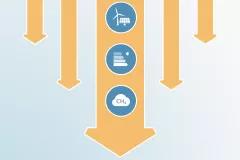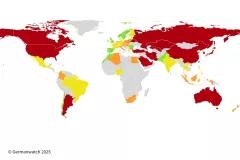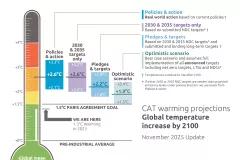The updated results of NewClimate Institute’s research to track the preparation of INDCs are now published.
The first wave of submissions of Intended Nationally Determined Contribution (INDC) to the UNFCCC’s INDC portal due in March is likely to cover only less than a third of global emissions, but already in June they are likely to reach over half, as now revealed by research from NewClimate Institute. This allows for a constructive negotiation process on the contributions during 2015.
All countries have been asked to present an emissions reduction proposal, which would ultimately be included in a new international climate agreement in December 2015. Additional proposals have been announced, but not formally submitted, for example by China, Chile and the Dominican Republic. The Lima Call for Action encouraged countries “in a position to do so” to submit their INDCs by 31 March 2015. A second implicit submission deadline is 01 October 2015, after which submissions are still allowed but will not be included in the UNFCCC’s synthesis report, which will be made available to Parties in time for the 21st Conference of Parties in Paris, December 2015. Countries able to do so are encouraged to submit their INDCs well in advance of this date.
Research from NewClimate Institute for UNFCCC and UNDP has tracked the progress of INDC preparations worldwide, and collected insights and lessons learned from the various preparation approaches. The second round of results were published on 30 March 2015 and include information on the progress that 97 countries have made in the preparation of their INDCs. These results are updated on a regular basis.
Figure 1 shows that very few countries have submitted or intend to submit before 31 March 2015. But as these countries include the EU and the USA, they together cover roughly 28% of global emissions. Coverage will reach over half of emissions around June and over three quarters in October.
Figure 1: Timeline showing the accumulated number of INDC submissions in each month and the proportion of global emissions covered.
How does this submission schedule impact the negotiations on a future international agreement on climate change? The views diverge between two broad perspectives:
Some argue for an early and precise submission; countries should put forward their offers as soon as possible so that during the course of 2015, offers can be analysed, aggregated and strengthened if needed.
Others argue, that countries should put forward their firm offers later, because they hardly change once made. For example, since 2009 we know that the Copenhagen pledges are in aggregate not sufficient, but no single large emitter has strengthened its target since. It is unlikely that a target that was either announced by a president or that was a result of a long stakeholder consultation would be changed significantly during an international negotiation process.
An ideal scenario, in-between these two views, would be a staged approach, where countries very early in the process announce relatively vague targets that leave room for changing ambition in a negotiation phase during 2015.
In fact, this is actually what is happening: The EU has put forward “at least” a 40% reduction, the USA will present a range of percentage reductions and China has announced, but not submitted, a loosely defined peak year. This will now enable a constructive negotiation process during 2015, and builds hope that the remaining time can be used towards constructing an agreeable 2015 international climate agreement.
Further results from the data collection
Progress has been made in the last month: Of the countries accounted for in the results (which altogether account for 85% of global GHG emissions), the number of those not having started decreased from over 36% to below 30%. Slightly less than one third of countries have initiated the national discussion, but not yet proceeded to the technical design. The share of countries in technical design has increased from 13 to 20%.
Still, 37% of responding countries, but covering only 7% of global emissions, indicated that they have not yet set an internal timeline for their submission.
This update confirms that timing is the most significant of the challenges that countries face in the preparation of their INDCs; approximately 88% of countries feel challenged by the short timeframe available for the process. Other major challenges reported were lack of certainty and guidance on what to include in INDCs (73%), limited expertise for the assessment of technical options (71%) and difficulty to secure high-level political support (66%).
Despite the challenges faced with limited expertise, less than a quarter of countries have already received international support specifically for the preparation of their INDCs. More than a quarter of countries indicate that they are still applying for international support.
The update also confirms, that countries have indicated on a large majority that the INDC process has afforded the country multiple opportunities, specifically, the enhanced engagement of stakeholders in planning and improved domestic and international communication on climate change issues. Importantly, 76% of countries report that their INDC preparations have helped to accelerate national climate change policy processes. These benefits are expected to become even more tangible in the coming months as countries continue to more advanced stages in their INDC preparations.
A wide range of INDC types can be expected from countries’ submissions. Approximately two thirds of countries report that their INDCs will include a long term goal for GHG emissions, whilst it is also clear that most countries intend to include a mixture of components including non-GHG related outcomes, specific policies and actions, and broader institutional development. Furthermore, over half of countries report that climate change adaptation plans will form a major component of their INDC.
The full results, aggregated at the global and regional level, are available to browse.







